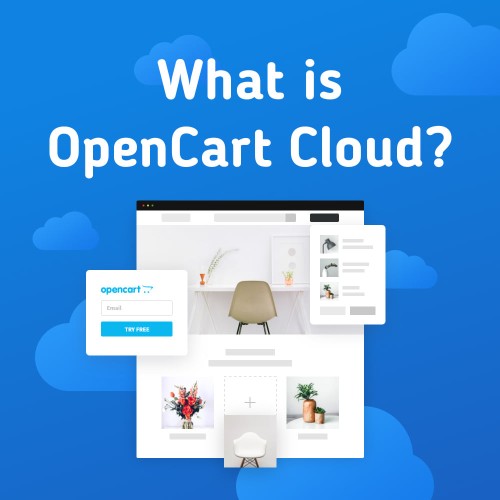Ecommerce and Marketing Synergy: Maximizing Growth Opportunities in 2023
The landscape of marketing has experienced a profound shift with the rapid growth of ecommerce. In recent years, ecommerce has emerged as a game-changer, revolutionizing how businesses reach and engage with customers. The seamless integration of technology and online platforms has created a new avenue for marketing, enabling businesses to maximize growth opportunities like never before. In 2023, ecommerce and marketing are converging in a powerful synergy, presenting businesses with unparalleled possibilities for expansion and success.
The Significance of Ecommerce in the Marketing Landscape
Ecommerce has fundamentally transformed the way businesses operate and market their products or services. With the rise of online shopping, consumers now have greater convenience and accessibility, leading to a significant shift in their purchasing behavior. The ability to shop anytime, anywhere, coupled with the ease of comparing prices and reading reviews, has empowered customers to make informed decisions. As a result, businesses need to adapt their marketing strategies to capture the attention and loyalty of these digitally savvy consumers.
Thesis Statement: In 2023, ecommerce and marketing are converging to create new growth opportunities for businesses.
As the world becomes increasingly interconnected, the convergence of ecommerce and marketing is becoming more evident. The digital nature of e-commerce provides a wealth of data and insights that can be leveraged to optimize marketing strategies. By harnessing this synergy, businesses can enhance their reach, tailor their messaging, and create personalized experiences for customers. In 2023, this convergence presents businesses with unprecedented growth opportunities, allowing them to thrive in a highly competitive marketplace.
Statistics and trends showcasing the rapid growth of ecommerce in recent years
The growth of ecommerce has been nothing short of remarkable in recent years. Here are some statistics and trends that highlight its rapid expansion:
Global ecommerce sales reached $4.28 trillion in 2020, representing a 27.6% increase compared to the previous year. (Statista)
It is projected that global ecommerce sales will reach $6.38 trillion by 2024, showcasing the continued growth trajectory. (Statista)
Mobile ecommerce, or m-commerce, has been a significant driver of ecommerce growth. In 2021, mobile ecommerce sales accounted for 73.9% of total ecommerce sales worldwide. (eMarketer)
The COVID-19 pandemic further accelerated the adoption of ecommerce, with a significant surge in online shopping. In 2020, global retail ecommerce sales grew by 27.6% due to the pandemic's impact. (eMarketer)
The rise of cross-border ecommerce has opened up new opportunities for businesses to expand their reach globally. By 2022, cross-border ecommerce is expected to account for 22% of global ecommerce sales. (Shopify)
Key factors driving the expansion of ecommerce in 2023
Technological advancements: Continued advancements in technology, such as artificial intelligence, augmented reality, and virtual reality, are enhancing the online shopping experience. These technologies enable businesses to provide immersive and personalized experiences to customers, driving engagement and sales. Additionally, using virtual machine hosting offers businesses a competitive advantage by significantly improving site speed, enhancing the user experience, and ultimately maximizing conversions.
Changing consumer behavior: Consumers today increasingly value convenience, time-saving, and personalized experiences. Ecommerce provides the convenience of shopping from anywhere at any time, along with personalized recommendations based on past behavior and preferences. As a result, more consumers are shifting towards online shopping, driving the growth of ecommerce.
Increased internet penetration: The increasing global internet penetration rate has expanded the potential customer base for ecommerce. As more people gain access to the internet, the number of online shoppers continues to grow, creating vast opportunities for businesses.
Expansion of mobile connectivity: The proliferation of smartphones and improved mobile internet connectivity has fueled the growth of mobile ecommerce. With mobile devices becoming an integral part of people's lives, businesses are optimizing their online platforms for mobile devices to capture the growing market of mobile shoppers.
The Role of Marketing in Ecommerce
The success of ecommerce businesses relies heavily on effective marketing strategies. Marketing contributes in various ways to drive growth, increase brand awareness, and maximize conversions. In this section, we will delve deeper into how marketing strategies contribute to the success of ecommerce businesses.
Building Brand Awareness: Marketing helps ecommerce businesses create and enhance brand awareness. Through consistent branding, messaging, and targeted advertising campaigns, businesses can increase their visibility and reach a wider audience. By employing strategies like search engine optimization (SEO), pay-per-click (PPC) advertising, and social media marketing, businesses can generate brand exposure and attract potential customers.
Incorporating billboard advertisements into the marketing mix can further bolster brand awareness for ecommerce businesses, capturing the attention of a diverse audience and driving increased visibility and customer engagement. .Additionally, using visually appealing brochure templates can be an effective way to communicate key brand messages and product offerings.
Driving Website Traffic: Marketing strategies such as SEO, content marketing, social media marketing, and email marketing play a crucial role in driving traffic to ecommerce websites. By optimizing website content for search engines, creating valuable and engaging content, leveraging social media platforms, and utilizing email campaigns, businesses can attract a steady stream of visitors to their websites. To help optimize your website, you can hire an SEO expert using the SEO online test.
Maximizing Conversions: Marketing strategies are essential for maximizing conversions and turning website visitors into paying customers. Conversion rate optimization (CRO) techniques, including user experience (UX) design, A/B testing, and personalized product recommendations, help businesses create a seamless and user-friendly shopping experience. By optimizing the website's design, simplifying the checkout process, and personalizing the shopping journey, businesses can increase the likelihood of conversions. To help design ecommerce websites, consider hiring a professional website design expert who specializes in crafting exceptional designs tailored for online shopping experiences.
Building Customer Relationships: Marketing plays a vital role in building and nurturing customer relationships in the ecommerce space. Email marketing software, social media engagement, and personalized communication enable businesses to connect with customers on a more personal level. By providing valuable content, sending targeted offers, and responding to customer inquiries and feedback, businesses can foster long-term relationships and customer loyalty.
Retargeting and Remarketing: Marketing strategies like retargeting and remarketing help ecommerce businesses re-engage with potential customers who have shown interest in their products or visited their websites. By displaying targeted ads to these individuals across various platforms, businesses can remind them about their offerings, encourage them to return, and increase the chances of conversion.
Analytics and Data-Driven Insights: Marketing strategies in ecommerce rely heavily on data analysis and insights. By leveraging analytics tools, businesses can gain valuable information about customer behavior, preferences, and purchase patterns. This data helps in understanding the effectiveness of marketing campaigns, identifying areas for improvement, and making data-driven decisions to optimize marketing strategies.
Future of Ecommerce and Marketing
The future of ecommerce and marketing is poised to be even more dynamic and diverse, with the emergence of multiple ecommerce platforms like OpenCart. OpenCart is a popular open-source ecommerce platform that provides businesses with a flexible and customizable solution for building and managing their online stores. In this section, we will explore the future of ecommerce and marketing using multiple ecommerce platforms like OpenCart.
Increased Customization and Personalization: Ecommerce platforms like OpenCart are continuously evolving to offer enhanced customization options. In the future, businesses will have greater control over the design, layout, and functionality of their online stores. This level of customization will enable businesses to create unique and personalized shopping experiences tailored to their target audience's preferences.
Seamless Multichannel Selling: The future of ecommerce will see an increased focus on multichannel selling, where businesses can sell their products across various platforms and channels. OpenCart, along with other ecommerce platforms, will integrate seamlessly with popular marketplaces, social media platforms, and mobile apps, allowing businesses to reach customers wherever they prefer to shop.
AI and Automation: Artificial Intelligence (AI) and automation will play a significant role in the future of ecommerce and marketing. AI-powered chatbots will provide personalized customer support and assistance, improving the overall shopping experience. Automation tools will streamline inventory management, order processing, and customer segmentation, enabling businesses to operate more efficiently and effectively.
Enhanced Mobile Commerce: With the increasing use of smartphones and mobile devices, mobile commerce (m-commerce) will continue to grow in importance. Ecommerce platforms like OpenCart will prioritize mobile optimization, ensuring that online stores are mobile-friendly and provide seamless shopping experiences on various screen sizes. Mobile payment options and mobile wallets will become more prevalent, simplifying the checkout process for mobile shoppers.
Data-Driven Insights: The future of ecommerce and marketing will be heavily influenced by data and analytics. Ecommerce platforms like OpenCart will offer robust reporting and analytics tools, providing businesses with valuable insights into customer behavior, sales trends, and marketing campaign performance. These insights will enable businesses to make data-driven decisions, optimize their marketing strategies, and deliver personalized experiences to customers.
Voice Commerce: As voice assistants and smart speakers become increasingly integrated into consumers' lives, voice commerce will gain momentum. Ecommerce platforms like OpenCart will adapt to voice search and voice commands, allowing customers to make purchases through voice-enabled devices. Businesses will need to optimize their product listings and content for voice search to remain competitive in this emerging market.
Conclusion
As we look towards the future, it is evident that the convergence of ecommerce and marketing presents significant growth opportunities for businesses in 2023 and beyond. The evolution of ecommerce, driven by technological advancements, changing consumer behavior, increased internet penetration, and the expansion of mobile connectivity, has created a thriving ecosystem for businesses to flourish.



Login and write down your comment.
Login my OpenCart Account